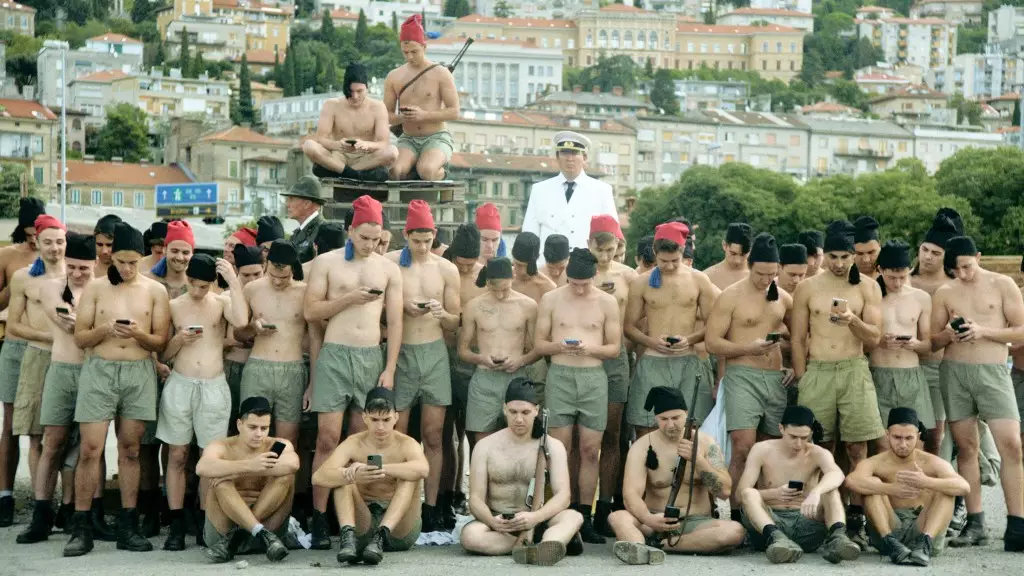Croatian filmmaker Igor Bezinović has captured the cinematic world’s attention with his documentary “Fiume o Morte!” which recently clinched the prestigious Tiger Award at the International Film Festival Rotterdam (IFFR). This accolade underscores not only the film’s artistic merit but also its relevance in contemporary discourse surrounding nationalism in Europe. Bezinović’s documentary focuses on Gabriele D’Annunzio, an Italian poet and playwright known for his audacious attempt to seize the city of Fiume (modern-day Rijeka, Croatia) in the turbulent aftermath of World War I.
By weaving dramatic reconstructions with factual documentary techniques, Bezinović masterfully delineates the motivations and impacts of D’Annunzio’s actions, particularly his outrage over the 1919 Paris Peace Conference, which controversially awarded Fiume to Yugoslavia. This blend of styles not only enlivens historical narrative but invites viewers to engage with the past in a personal and visceral manner. In a time when Europe grapples with the rise of ultra-nationalism, Bezinović challenges audiences to view history not as a mere relic, but as an ongoing narrative that shapes modern identities and conflicts.
Recognizing Cinematic Excellence: Awards and Accolades
The reception of “Fiume o Morte!” at IFFR extends beyond the Tiger Award; it also garnered the FIPRESCI Award, signifying its exceptional merit within the competitive Tiger Competition category. This recognition, determined by a jury including members like Yuki Aditya and Winnie Lau, emphasizes the film’s artistic innovation and sociopolitical engagement during a pivotal moment in European history. The jury’s statement reflects a profound understanding of the film’s interplay between public spaces and historical events, which serves as a conduit for exploring contemporary European realities.
Moreover, the film’s thematic concerns resonate with the ongoing discussions about nationalism, identity, and the vestiges of colonialism, suggesting that the turbulent legacies of the past continue to inform present realities. Such insights elevate “Fiume o Morte!” beyond mere historical recounting; it serves as a critical commentary on the cyclical nature of nationalism, urging audiences to reflect upon their own societal contexts.
Comparative Performances: Other Noteworthy Films at IFFR
While Bezinović’s documentary stands out, the IFFR also showcased a variety of artistically significant films that merit attention. Sammy Baloji’s “L’arbre de l’authenticité,” another recipient of a Tiger Special Jury Award, investigates the colonial history of the Democratic Republic of Congo, linking its past intricacies to the ecological fate of its rainforests. This film, which merges striking visuals with potent narrative, engages deeply with themes of identity and environmentalism—essential conversations in our current global climate.
Tim Ellrich’s “Im Haus meiner Eltern,” which garnered another special jury accolade, explores the delicate balance between professional and family obligations through the lens of a therapist grappling with the needs of her ageing relatives. This film embodies the personal complexities that many face today, offering audiences a relatable and poignant reflection on familial bonds and social responsibilities.
Additionally, Jon Blåhed’s “Raptures,” awarded the Big Screen Award, presents a dramatic narrative surrounding a woman ensnared within an extremist sect, which heightens the stakes of personal resilience against the backdrop of radical ideology. This film, along with Varsha Bharath’s “Bad Girl,” winner of the NETPAC Award, encapsulates the festival’s commitment to showcasing diverse narratives that span various cultures and issues.
Ultimately, “Fiume o Morte!” and its counterparts at IFFR reflect the powerful role of cinema in addressing historical complexities and societal challenges. By offering fresh perspectives on historical figures and events, these films encourage critical engagement among viewers regarding their own cultural and political landscapes. As audiences worldwide confront rising nationalism and identity conflicts, the insights garnered from such cinematic explorations underscore the necessity of understanding our past to navigate the present and future effectively.


Leave a Reply